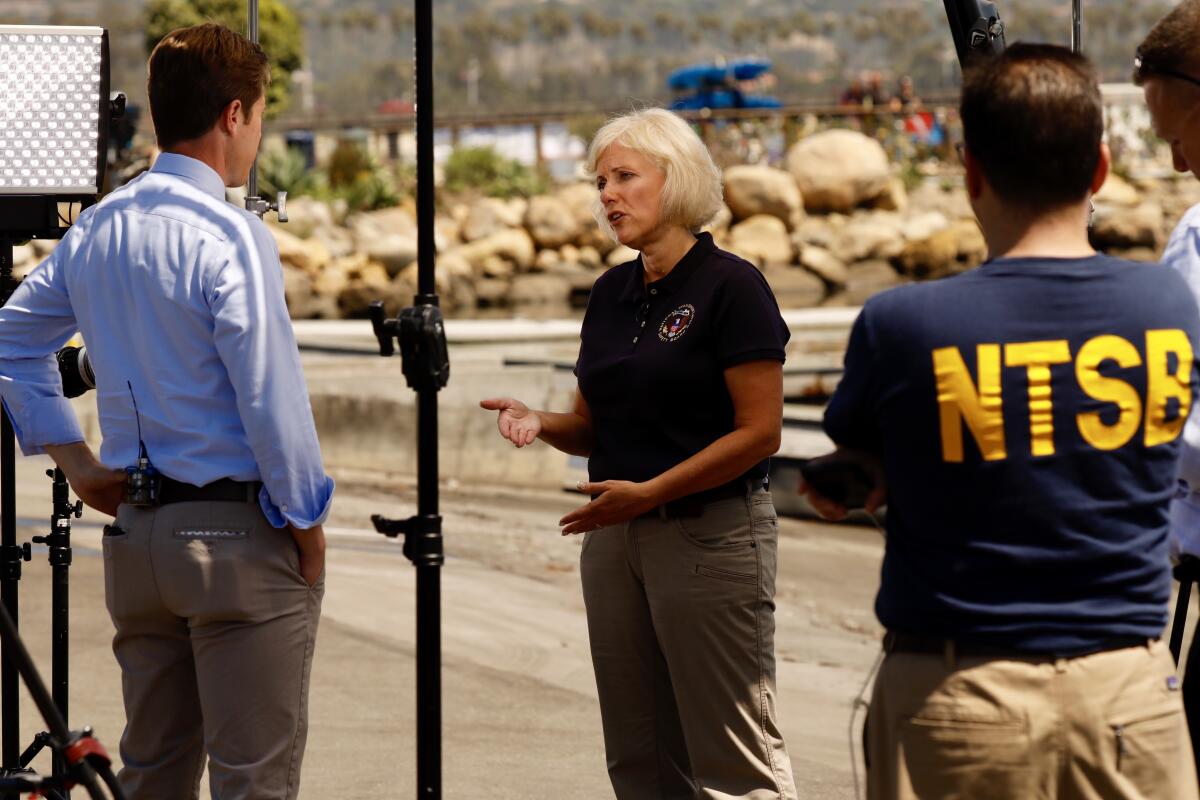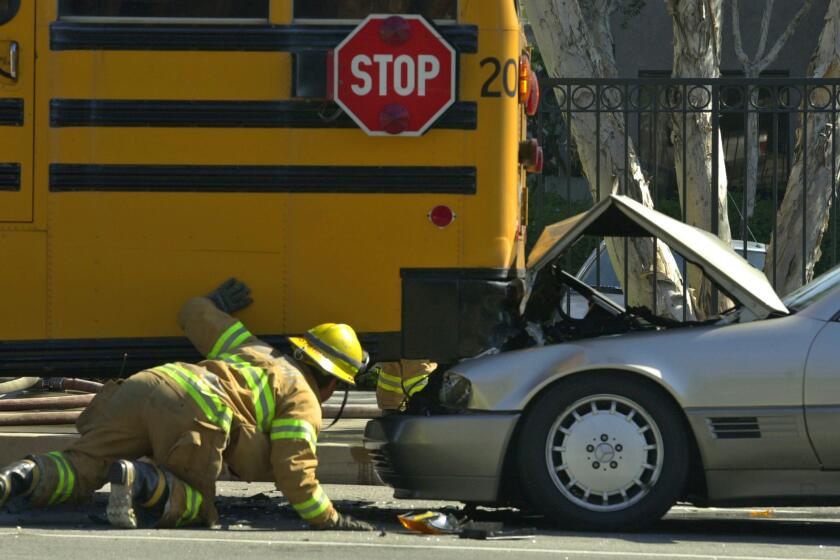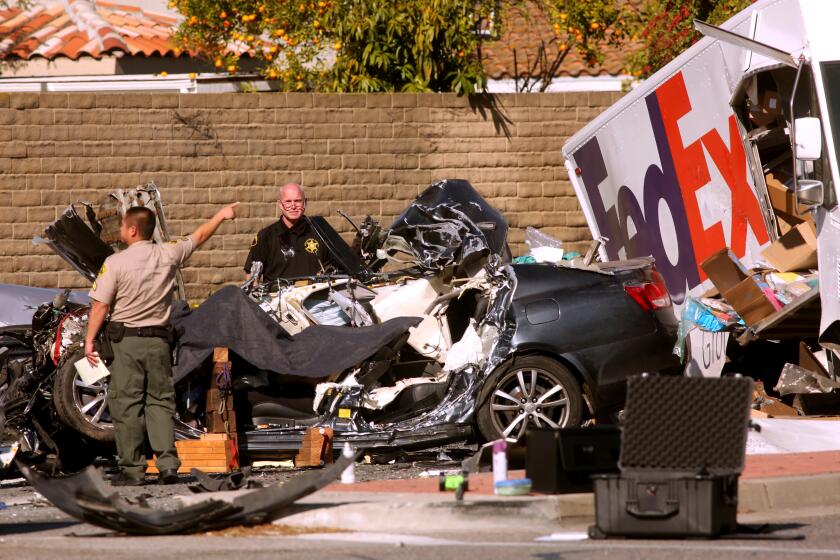Feds want drunk-driving detectors on all new cars after California crash that killed 9

An investigation into a New Year’s Day crash in Avenal, Calif., in 2021 that killed nine people — including seven children — has prompted the National Transportation Safety Board to call for an alcohol-impairment detection system to be installed in all new cars.
The NTSB, which investigates the most severe traffic collisions along with other transit disasters, wants in-vehicle technology that tests all motorists for potential impairment. The recommendation comes after reports on the deadly Fresno County collision show it was caused by an impaired driver who was speeding nearly 100 mph.
The crash occurred when Daniel Luna slammed head-first into a pickup truck carrying seven children ages 6 to 15 years on State Route 33 between Avenal and Coalinga, NTSB officials said. Luna was driving a Dodge Journey SUV, traveling 98 mph on the rural stretch of road, federal authorities said. He ran off the shoulder of the road to the right and overcorrected, swerving across the center line and directly in front of an oncoming Ford F-150 pickup truck.
When California Highway Patrol officers were dispatched to the scene about 8 p.m., the truck was “fully engulfed in flames,” said Officer Rory Marks, a CHP spokesman. All of the victims were pronounced dead at the scene.
“Technology could’ve prevented this heartbreaking crash — just as it can prevent the tens of thousands of fatalities from impaired-driving and speeding-related crashes we see in the U.S. annually,” said NTSB Chair Jennifer Homendy, who leads the federal safety advocacy panel. “We need to implement the technologies we have right here, right now, to save lives.”
Looking to curb rear-end collisions, federal safety regulators announced plans Thursday to add two new features to a list of recommended safety technologies.
The NTSB’s recommendation to the National Highway Traffic Safety Administration will ramp up pressure to address drunk-driver safety and prevention as vehicle technology improves. The NTSB has previously said such technology is possible.
The NTSB found that the SUV driver had a “high level of alcohol intoxication,” more than twice California’s 0.08 limit, and was operating at an excessive speed. These factors contributed to a loss of vehicle control, the board said.
The investigation also determined that the “excessive speed” of the SUV prevented the pickup from having enough time to take evasive action to avoid the crash. The NTSB concluded that the crash was unlikely to have been survivable because of the severity of the head-on collision, the significant vehicle intrusion and the rapid spread of the post-crash fire.
The NTSB was unable to determine whether tetrahydrocannabinol detected in Luna’s blood sample after he died resulted from recent cannabis use or was a result of long-term habitual cannabis use acknowledged by his family.
U.S. Transportation Secretary Pete Buttigieg releases a plan that emphasizes moving people safely, not cars quickly.
As part of its recommendations, the NTSB said federal transportation officials should require passive vehicle-integrated alcohol impairment detection systems, advanced driver-monitoring systems or a combination that would be capable of preventing or limiting vehicle operation if driver impairment by alcohol is detected. The board also said manufacturers should be encouraged to adopt “intelligent speed-adaptation systems that would prevent speed-related crashes.”
The NTSB has made similar recommendations in the past.
“We have to remember that technology is only part of the solution. To save lives on our roads, we need to look more broadly at the entire transportation system, which includes everything that can prevent a crash,” Homendy said.
Restaurant and beverage trade groups have opposed such a move, warning it would leave motorists wondering whether their car would start after they drink a glass of wine with dinner. Those groups have supported such devices only for repeat DUI offenders. Only about a third of U.S. states require first-time DUI offenders to install such devices.
National transportation statistics show that driving under the influence of alcohol remains a leading cause of highway crashes resulting in injury. More than 230,000 people have lost their lives in crashes involving drunk drivers in the last 22 years, according to NHTSA data.
In 2020, during the first year of the COVID-19 pandemic, there were more than 11,654 alcohol-impaired crash fatalities, a significant uptick over 2019.
Speeding also worsened during that time, with 11,258 fatalities in crashes involving at least one driver, according to data from the NHTSA.
To prevent alcohol and other drug-impaired driving crashes, the NTSB has called for lowering the blood alcohol limit to 0.05 or lower, installing alcohol ignition-interlock devices for people convicted of DUI and improved improve drug toxicology testing.
More to Read
Sign up for Essential California
The most important California stories and recommendations in your inbox every morning.
You may occasionally receive promotional content from the Los Angeles Times.












